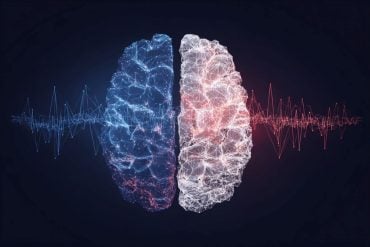Summary: A large new analysis of 102 clinical trials finds that ADHD medications have overall small effects on blood pressure and heart rate in both children and adults. These cardiovascular effects—mostly modest increases—were consistent across stimulants and non-stimulants, with guanfacine being the exception, lowering these parameters.
While concerns have been raised about side effects, the benefits of ADHD medications—such as improved academic function and reduced mortality—generally outweigh the risks. The researchers emphasize that regular cardiovascular monitoring should be part of ADHD care, especially in patients with preexisting heart conditions.
Key Facts:
- Small Cardiovascular Effects: ADHD meds cause minor increases in heart rate and blood pressure, except for guanfacine, which lowers them.
- Stimulants vs. Non-Stimulants: Both types of medications showed similar cardiovascular effects, countering assumptions that only stimulants pose risks.
- Monitoring Urged: Authors recommend routine blood pressure and heart rate checks for all patients, regardless of medication type.
Source: University of Southampton
A new study led by the University of Southampton has found that medications for ADHD have overall small effects on blood pressure and heart rate after weeks or a few months of use.
There have been concerns about the side effects of ADHD medications but the new findings, coupled with other studies, suggest that the benefits of taking these medications outweigh the risks, while highlighting the need for careful monitoring.

The study, published in The Lancet Psychiatry, conducted the largest and most comprehensive analysis of the cardiovascular effects of ADHD medications based on the results of randomised controlled trials – the most rigorous type of clinical study to assess medication effects.
Professor Samuele Cortese, senior lead author of the study from the University of Southampton said: “When it comes to taking any medication, risks and benefits should always be assessed together. We found an overall small increase in blood pressure and pulse for the majority of children taking ADHD medications.
“Other studies show clear benefits in terms of reductions in mortality risk and improvement in academic functions, as well as a small increased risk of hypertension, but not other cardiovascular diseases. Overall, the risk-benefit ratio is reassuring for people taking ADHD medications.”
The study was funded by the National Institute for Health and Care Research (NIHR), within the framework of the NIHR Research Professorships scheme to Professor Samuele Cortese, with Dr Luis Farhat (University of São Paulo, Brazil) as first author and Professor Alexis Revet (University of Toulouse, France) as co-senior author.
It is estimated that attention-deficit/hyperactivity disorder (ADHD) affects around 4 per cent of children in the UK. Of these, around 45 per cent are treated with medication.
The international team of investigators analysed data from 102 randomized controlled trials, including a total of 22,702 participants with ADHD. They used an advanced statistical approach – network meta-analysis – that allowed them to compare the effects of several medications, even when the medications were not directly compared in the trials included in the analysis.
They found that all ADHD medications were generally associated with overall small effects on blood pressure, heart rate, and ECG parameters. With the exception of guanfacine (which leads to decreased blood pressure and heart rate), other medications led to increases in the values of these parameters.
No significant differences were found between stimulants (including methylphenidate and amphetamine) and non-stimulants (atomoxetine and viloxazine) with regard to their effects on blood pressure and heart rate.
“Our findings should inform future clinical guidelines, stressing the need to systematically monitor blood pressure and heart rate, both for stimulants and non-stimulants. This should be particularly relevant for practitioners who might assume that only stimulants have a negative effect on the cardiovascular system,” said Dr Farhat.
The researchers say that those with existing heart conditions should discuss the side effects of ADHD medications with a specialist cardiologist before starting treatment.
Professor Revet added: “Our findings, based on randomised controlled trials that tend to be of short duration due to ethical issues, should be complemented by results from real-world, longer-term studies.”
The research team will now look to see if some groups might be more vulnerable to cardiovascular side effects than others.
NIHR Research Professor Cortese concluded: “While our findings are informative at the group level, that is, on average, we cannot exclude that a subgroup of individuals may have a higher risk of more substantial cardiovascular alterations.
“While it is currently not possible to identify those individuals at higher risk, efforts based on precision medicine approaches will hopefully provide important insights in the future.”
About this psychopharmacology and cardiovascular health
Author: Steven Williams
Source: University of Southampton
Contact: Steven Williams – University of Southampton
Image: The image is credited to Neuroscience News
Original Research: Closed access.
“Comparative cardiovascular safety of medications for attention-deficit hyperactivity disorder in children, adolescents, and adults: a systematic review and network meta-analysis” by Samuele Cortese et al. Lancet Psychiatry
Abstract
Comparative cardiovascular safety of medications for attention-deficit hyperactivity disorder in children, adolescents, and adults: a systematic review and network meta-analysis
Background
Concerns about the cardiovascular safety of medications used for the treatment of attention-deficit hyperactivity disorder (ADHD) remain. We aimed to compare the effects of pharmacological treatments for ADHD on haemodynamic values and electrocardiogram (ECG) parameters in children, adolescents, and adults.
Methods
For this systematic review and network meta-analysis, we searched 12 electronic databases, including Cochrane CENTRAL, Embase, PubMed, and the WHO International Clinical Trials Registry Platform, from database inception to Jan 18, 2024, for published and unpublished randomised controlled trials comparing amphetamines, atomoxetine, bupropion, clonidine, guanfacine, lisdexamfetamine, methylphenidate, modafinil, or viloxazine against each other or placebo.
Primary outcomes were change in systolic blood pressure (SBP) and diastolic blood pressure (DBP), measured in mm Hg, and pulse, measured in beats per minute, at timepoints closest to 12 weeks, 26 weeks, and 52 weeks.
Summary data were extracted and pooled in random-effects network meta-analyses. Certainty of evidence was assessed with the Confidence in Network Meta-Analysis (CINeMA) framework.
This study was registered with PROSPERO, CRD42021295352. Before study initiation, we contacted representatives of a UK-based charity of people with lived experience of ADHD—the ADHD Foundation—regarding the relevance of the topic and the appropriateness of the outcomes chosen.
Findings
102 randomised controlled trials with short-term follow-up (median 7 weeks [IQR 5–9]) were included, encompassing 13 315 children and adolescents (aged ≥5 years and <18 years; mean age 11 years [SD 3]; of available data, 9635 [73%] were male and 3646 [27%] were female; of available data, 289 [2%] were Asian, 1719 [15%] were Black, and 8303 [71%] were White) and 9387 adults (≥18 years, mean age 35 years [11]; of available data, 5064 [57%] were male and 3809 [43%] were female; of available data, 488 [6%] were Asian, 457 [6%] were Black, and 6372 [79%] were White).
Amphetamines, atomoxetine, lisdexamfetamine, methylphenidate, and viloxazine led to increments in haemodynamic values in children and adolescents, adults, or both.
In children and adolescents, mean increase against placebo ranged from 1·07 (95% CI 0·36–1·79; moderate CINeMA confidence) with atomoxetine to 1·81 (1·05–2·57; moderate) with methylphenidate for SBP; from 1·93 (0·74–3·11; high) with amphetamines to 2·42 (1·69–3·15; low) with methylphenidate for DBP; and from 2·79 (1·05–4·53; moderate) with viloxazine to 5·58 (4·67–6·49; high) with atomoxetine for pulse.
In adults, mean increase against placebo ranged from 1·66 (95% CI 0·38–2·93; very low) with methylphenidate to 2·3 (0·66–3·94; very low) with amphetamines for SBP; from 1·60 (0·29–2·91; very low) with methylphenidate to 3·07 (0·69–5·45; very low) with lisdexamfetamine for DBP; and from 4·37 (3·16–5·59; very low) with methylphenidate to 5·8 (2·3–9·3; very low) with viloxazine for pulse.
Amphetamines, lisdexamfetamine, or methylphenidate were not associated with larger increments in haemodynamic values compared with atomoxetine or viloxazine in either children and adolescents or adults.
Guanfacine was associated with decrements in haemodynamic values in children and adolescents (mean decrease against placebo of –2·83 [95% CI –3·8 to –1·85; low CINeMA confidence] in SBP, –2·08 [–3 to –1·17; low] in DBP, and –4·06 [–5·45 –2·68; moderate] in pulse) and adults (mean decrease against placebo of –10·1 [–13·76 to –6·44; very low] in SBP, –7·73 [–11·88 to –3·58; very low] in DBP, and –6·83 [–10·85 to –2·81; very low] in pulse). Only four RCTs informed on effects in the medium term and none on the long term.
Interpretation
Practitioners should monitor blood pressure and pulse in patients with ADHD treated with any pharmacological intervention, and not stimulants only. Given the short duration of available randomised controlled trials, new research providing insights on the causal effects of ADHD medications on cardiovascular parameters in the longer term should be funded.
Funding
National Institute for Health and Care Research.






